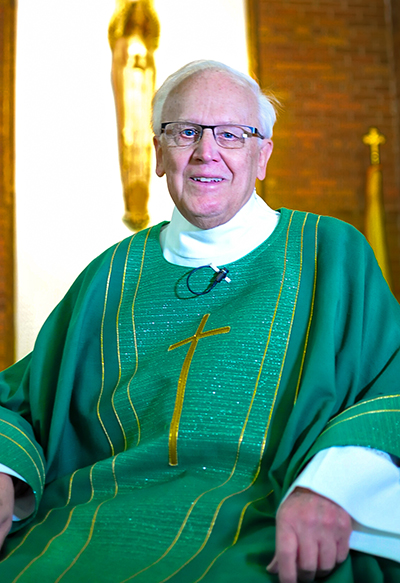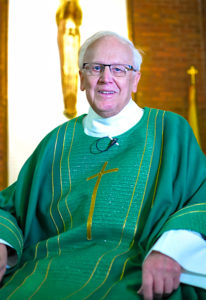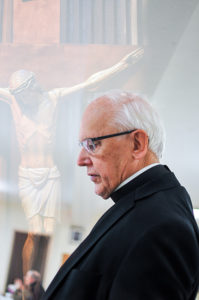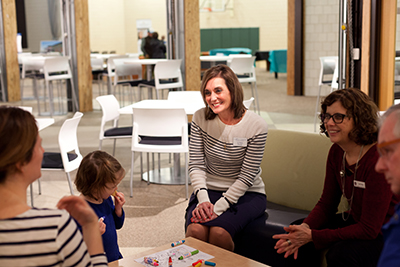
By Zulema Moret | Photography by Luis Fonseca
 “Wayfarer, there is no way. Make your way by going farther…”, so say the verses of the great Spanish poet, Antonio Machado. And indeed, there is a path that communities of faith traverse in their own unique way, summoned by a call, and this is the path that leads to Christ, by following his teachings. Many metaphors are used to describe this way; one of them is the parable of the workers in the vineyard, in which the Lord compares the Kingdom of God to a farmer who goes out throughout the day in search of workers for his vineyard.
“Wayfarer, there is no way. Make your way by going farther…”, so say the verses of the great Spanish poet, Antonio Machado. And indeed, there is a path that communities of faith traverse in their own unique way, summoned by a call, and this is the path that leads to Christ, by following his teachings. Many metaphors are used to describe this way; one of them is the parable of the workers in the vineyard, in which the Lord compares the Kingdom of God to a farmer who goes out throughout the day in search of workers for his vineyard.
Following this metaphor of walking together, a group of leaders from the Catholic community has gathered for several months as attentive workers in the vineyard, (Mt. 20:1-16) to carry out the development of the Plan Pastoral, a plan that will be instrumental in helping to respond to the challenges of the Hispanic community. As we well know, a pastoral plan looks to the future, laying out future steps in relation to the community with which it dialogues at its various levels. However, to accomplish this, it is necessary to look with gratitude at the past, in an effort to learn from those who walked the path before us and take stock of how far we have come. We call this process “historical memory.” In the process of reconfiguring this historical memory, the name of one priest again and again comes to mind, a priest who accompanied our migrant brothers and sisters in his journey through the migrant camps of West Michigan; Father Theodore Kozlowski, known as Father Ted.
A bit of history: How this journey with the Hispanic Community began
We’ve taken the opportunity to talk with Father Ted about his story, his life and journey, and learned that in 1954, as a seminarian, he was sent by Bishop Haas to Assumption Seminary in San Antonio, Texas, together with Father Donald Weber, to begin studies in theology, Spanish and Mexican culture. During his stay, he visited the small-town parishes of the Archdiocese of San Antonio to minister in Spanish and English. Returning to Michigan in 1958, he was ordained a priest in the Cathedral of Saint Andrew.
Later on, he spent a season in Traverse City, and of this period he tells us: “I went walking throughout the Diocese, from one camp to another, visiting the field workers and there learning more by talking with them about their culture and the language. They wanted to know if there was a Mass in Spanish. That’s how, in 1958, my ministry began.”
After that summer of ’58, Father Ted returned to the Cathedral of Saint Andrew and helped Father Leo with talks, Bible studies, quinceañeras, preparing youth for confirmation and celebrating three masses each Sunday at Saint Andrew’s. At that time, the Chapel of Our Lady of Guadalupe was in a small room and was the only chapel where Mass in Spanish was celebrated. He explains that “beforehand, older generations would come and there weren’t very many ministries. The parishioners were very grateful that I spoke Spanish and later they were my teachers.”
In 1965 he is assigned to the parish of St. Joseph the Worker, on Ramsey Ave. Referring to this era, he tells us: “In the summer we celebrated Mass on Wednesdays in a shop. We would talk with the youth and the adults and offer them food and clothing. There were volunteers, and among them were two American families that wanted to live with the people. They sent their children to St. Joseph School and later to Hall School. The missionaries gave music classes, and were the students of Sister Lucía Zapata, OP. They also gave classes to the catechists on how to teach the children. Everyone was integrated in the life of the parish. I stayed there for four years until in 1969 I returned to St. Francis de Sales in Holland, where they had taken away the Mass in Spanish. I was there another four years.”

The Mobile Team: An office in the car… A pilgrim’s office
Between 1976 and 1979 he was at St. Joseph’s Seminary giving the seminarians classes in Hispanic culture and language: “There were three priests who came on weekends to speak at the churches about vocations and to help in the parishes.” In 1979 he returned to his walk alongside the Hispanic people and, recalling the beginnings of the Office of Hispanic Ministry, he tells us: “The team was mobile, we brought the office with us in the car, we visited families and gave catechism classes.”
By then, together with Father Pedro García, the Office of Hispanic Ministry was initiated, a pilgrim office as it still had no fixed location. “This is how we began the Hispanic apostolate,” recalls Father Ted, “It was Sister Gertrude visiting the people, bringing food, preparing the children with the catechists; during the migrant season, in those groups you would find Sister Lupe, who was in Hart, Father Dudek, Sister Lucía and the groups of laypeople. We traveled as far as Ionia to offer Mass, with a van full of clothing and food. Sometimes we would go to the hospitals to visit the sick.”
Like Jesus and his disciples, Father Ted journeyed through the fields of West Michigan, carrying the Living Word and evangelizing, and undertaking numerous projects and assignments. From 1995 to the present day, Father Ted has been pastor of Our Lady of Sorrows where he began to celebrate the Mass in Spanish and continue spreading the Word of God in English and Spanish, through the sacraments and numerous ministries.
When we asked him about what he remembers most fondly about his service to the Hispanic community, he tells us: “The invitations from the people, the faith lived out by the Hispanic families and their always being ready to take part in the ministries. They didn’t have much time, they worked very hard for their families, so their children could go to college, and for their festivals, to not lose their culture.” Without a doubt, Father Ted is a central figure in the reconstruction of the historical memory of Hispanic Catholics in the Diocese of Grand Rapids and West Michigan. His walk alongside the Hispanic people will always be remembered with gratitude.



